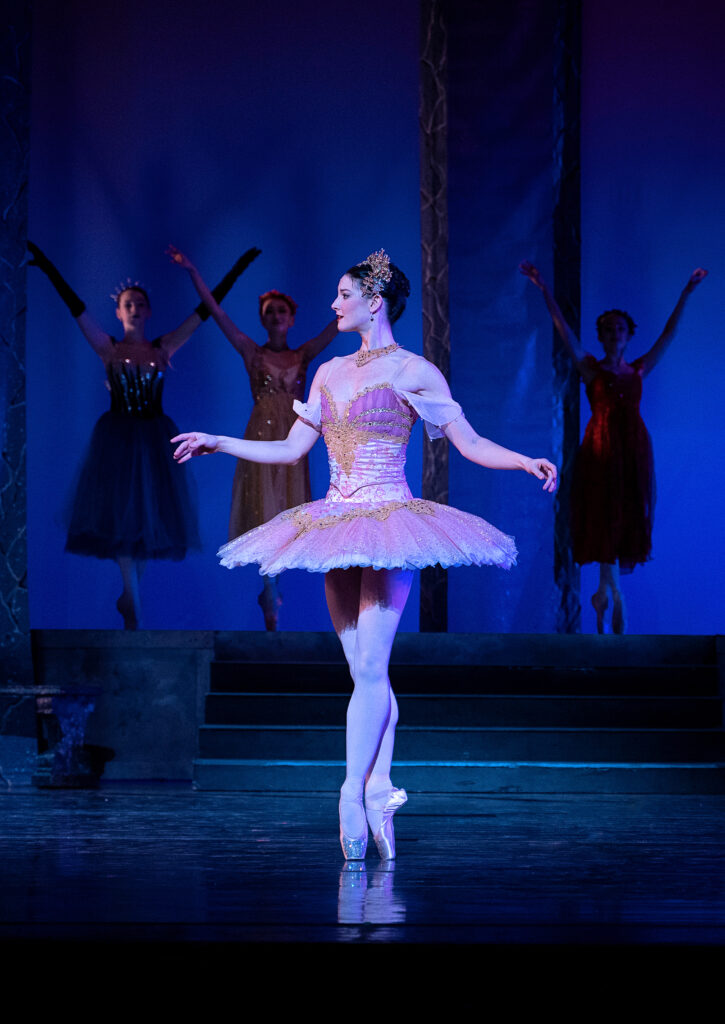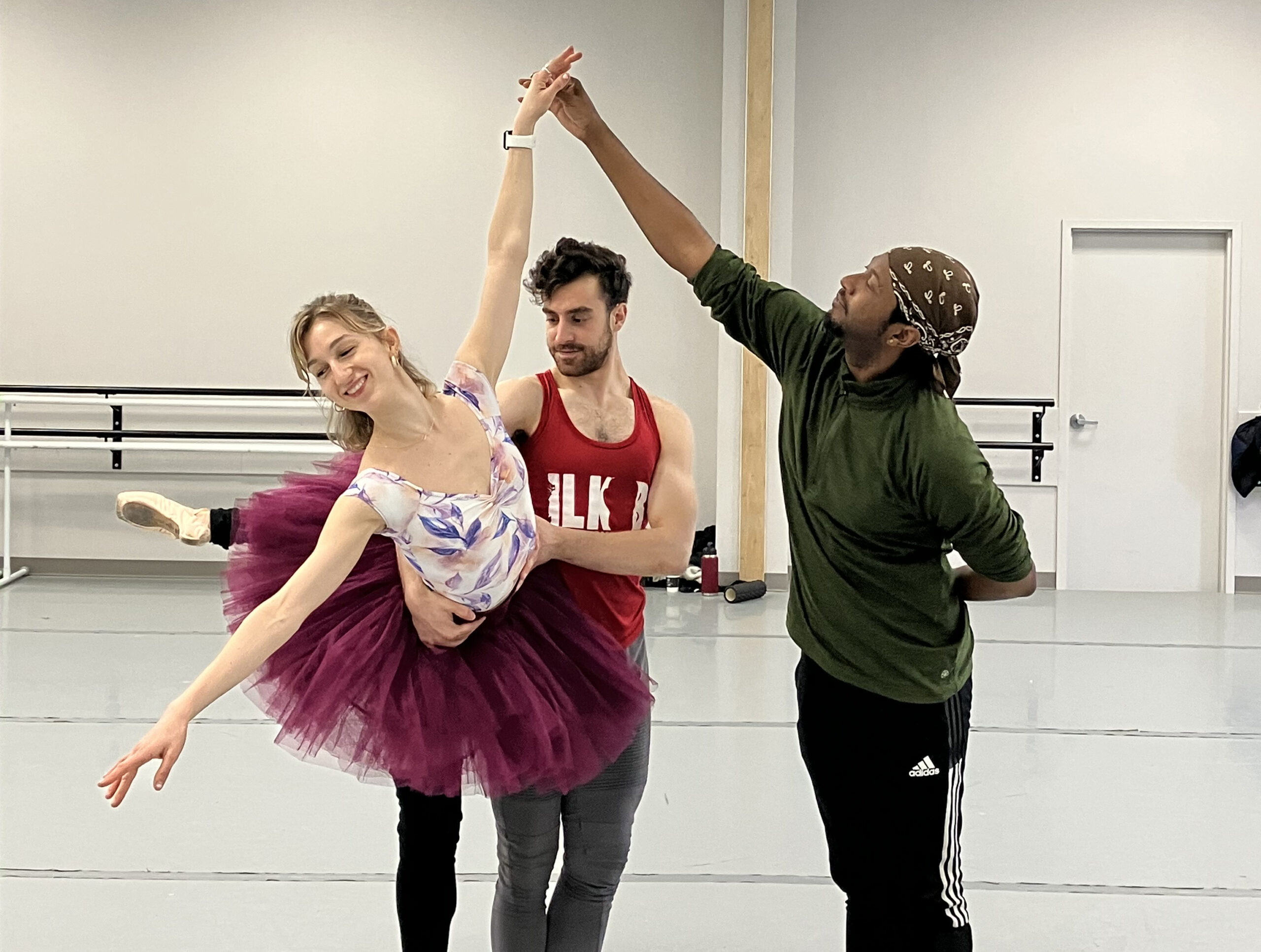Syracuse City Ballet Dancers Went on Strike and Quickly Lost Their Jobs. What Happened?
The story of Syracuse City Ballet has been making waves, from People magazine to NowThis, on social media, and in local news. In November, the eight dancers of the central New York company went on strike less than three weeks before Nutcracker, alleging unsafe working conditions and incompetent artistic leadership.
Five days later, negotiations between the dancers and SCB’s board broke down. Five dancers were fired, while two returned to work (one of whom is on an international visa dependent on her job). Another, who had been put on administrative leave, was fired in December.
The incident might appear to be a familiar case of dancers being treated poorly and fighting to have their voices heard. Yet there is more to understand about this story insofar as it represents issues facing ballet, including financial strain, diversity, the role of the board, and what qualifies someone to lead.
Early Leadership Transitions
Syracuse City Ballet formed a company of professional dancers in 2019, building on 25 years as a youth company. Among those first company members was Caroline Sheridan, who also served as an assistant ballet mistress.
At the end of the 2020–21 season, the board parted ways with SCB’s co-founder and artistic director Kathleen Rathbun. They named the ballet master, Aldo Kattón, as interim artistic director for the 2021–22 season. The board hired Sheridan, who hadn’t returned to dance with the company after the pandemic, as artistic director in spring of 2022.
The fired dancers claim that the company did not inform them of the search to replace the interim director, whom they enjoyed working with. They were skeptical that Sheridan, who had no prior experience as a director, was the right choice. One dancer, for instance, says Sheridan matched her with a partner who was too small for her and that she felt unsafe during lifts.
“It quickly became clear she didn’t have the eye or expertise to lead us,” says Cara Connolly, a dancer who joined SCB in 2019 with Sheridan, and who also served as associate rehearsal director.
Conflict began almost immediately. In 2022, Sheridan learned via social media that the dancers took class with the former interim director on some of their days off. She says she told them they needed to obtain her approval to take any outside classes. The dancers say she also reminded them she now offered the contracts.
The company members felt her outside class policy was unreasonable and unfair and complained to the board, which pressed Sheridan to reverse her position, and she did. The dancers also claim that she told them to avoid going over her head and to come directly to her with complaints, which she denies.
“The dancers never gave me a fair shot,” says Sheridan. “But I listened to them and took their concerns very seriously.”
Working for Little Pay
The tension was compounded by the realities of working in a company under financial strain. The artists’ contracts are currently 28 weeks, with salaries between $350 and $550 per week, for up to 25 hours per week of work. Neither Sheridan nor the dancers have access to health insurance through Syracuse City Ballet, and Sheridan says her salary and that of the staff is not competitive. She also took on the work of the executive director without additional pay during a nine-month period that the position was open.
“There was no staff when I joined, no rehearsal director, no company manager. I didn’t understand that walking in,” says Sheridan. “I had no support.”
But like many in ballet, Sheridan and the dancers were willing to overlook a lot in order to practice their art form.

Tensions Burst Into the Open
In late September 2023, Sheridan hired Jayson Douglas, who had previously worked with Minnesota Dance Theatre and James Sewell Ballet, and had served as an associate director of a youth company, as SCB’s rehearsal director. He noticed the tensions immediately.
“It was more like a collective, people talking to each other about the steps,” says Douglas. “There wasn’t a ton of respect for the person at the front of the room giving corrections.”
On November 8, a dancer raised concerns about the rehearsal schedules at the end of a company class. The dancer noted that the schedules contained errors, such as start times but no end times and incorrect dates, and that the schedule was often sent out at 10 pm the night before, even on outreach performance days starting with 9:30 am company class.
“The schedules were a mess all around,” says Connolly.
Douglas says the email delays were due to financial difficulties and not knowing from week to week, or even daily, if the company could afford to keep going. “I don’t believe in making dancers work for free,” he says.
Sheridan sent an email, reviewed by Pointe, that night. She committed to improving the scheduling process, and then specified several ways in which she felt the dancers needed to improve their professionalism. These included addressing issues by requesting a one-on-one meeting in advance, to be held in a private setting, as well as assuming a “listening role” and raising a hand before speaking during rehearsals.
Her email also told dancers they were not to film in rehearsals to “protect the integrity of the choreographer’s work,” and also to demonstrate respect for the director’s “authority and responsibility for coaching dancers within the preferred technical and artistic aesthetics.” It further stated that filming in the theater (Syracuse’s Oncenter Crouse Hinds Theater, where Nutcracker was to be performed), was forbidden and dancers “caught” doing so would be fined $200.
“It was demeaning,” says former company dancer Claire Solis, who also says Sheridan’s and Douglas’ demeanor turned “nasty” after the meeting. “The vibes in the studio were horrible after that.”
“Looking back, I regret sending that email and not having that discussion in person,” says Sheridan.
The Strike
Two days later, Sheridan says she was informed that teenage students in Nutcracker were saying disparaging things about the company.
“That kind of talk is bad for morale, and it needed to be addressed,” says Sheridan.
She says she decided to speak to a 15-year-old student she felt she had a good relationship with. Solis, who overheard the hallway encounter, says Sheridan accused the student of speaking ill of her leadership and the company, and asked her to report anyone else doing the same going forward. Solis says she walked by them, which interrupted what was happening and the conversation soon ended.

Shortly afterwards, Solis says, she found the young dancer sobbing. Solis then entered the office where Sheridan, Douglas, and the company manager were working and demanded to know why the student was crying. She claims Douglas raised his voice and slammed his hands on the table, saying he had never seen such a lack of professionalism. He then left the office.
Douglas denies any flare in his temper.
“As a Black man, I cannot lose my cool because if I am accused by a white person, I know I will not be believed,” he says. He is the only Black person in the organization, except for one board member.
Executive director Melissa Minjares, who joined SCB in August and had not worked with a ballet company before, put Sheridan on administrative leave, appointed Douglas interim director, and hired an independent HR professional to conduct an investigation. (Syracuse City Ballet does not have an HR department.)
Ultimately, the student dropped out of the production, because, according to local reports at the time, she felt unsafe.
The company members initiated a strike on November 11, refusing to perform Nutcracker under Douglas’ leadership. The dancers say they made claims about his temper and “incompetence,” such as running rehearsals way over time, asking dancers to do full run-throughs of pas de deux they hadn’t yet worked on, and expecting company members to learn roles on their own.
“Things like this didn’t feel safe, and we felt we could not speak up for ourselves,” says Solis.
Minjares, however, did not find sufficient reason to remove Douglas from the studio.
“He’s a professional with 20 years’ experience,” says Minjares. “There were no grounds to do this to him.”
The dancers presented several options to get through Nutcracker without Douglas in the studio, including bringing back Rathbun, the co-founder, who is Solis’ mother. (Rathbun is also the founding artistic director of Ballet and Dance of Upstate New York, a school that shares a building with SCB, which Douglas says has led to tensions.) SCB’s board told the dancers if they did not return to work with Douglas, they were in violation of their contracts and would be terminated.
An Uncertain Future
After five of the eight SCB dancers were fired on November 16, Douglas reached out to his network and found freelancers on very short notice during the busy Nutcracker season.
“They said ‘For you, we’ll make it happen,’ ” he says. “My network of relationships in this field is strong, and the narrative these dancers are creating about me is completely false.”
Meanwhile, the former SCB dancers started a fundraising campaign and put on their own holiday-themed performance in December under the name Central New York Ballet. They’ve received some community support, including a discount rental fee from the city’s Palace Theatre and musicians who donated their time. Minjares says that Solis, who had been on administrative leave during the HR investigation, was terminated for participating in the performance.
SCB’s board and Minjares claim that Central New York Ballet, which was founded as a 501(c)(3) a year ago, was created as a direct competitor and is further proof that the dancers had long been planning to strike. Yet the dancers say in a statement that it’s evidence of community support because a group of friends and family members formed the nonprofit “to offer us an alternative if we chose not to continue our relationship with SCB.”
SCB’s HR investigation cleared Sheridan of any fireable offenses. “The investigation found no material evidence that Ms. Sheridan created an unsafe work environment or violated our organization’s policies,” SCB’s board says in a statement, calling the allegations against her and the company “unfounded.” However, the former student and her mother, Jenn Wilder, are not represented in the report. The board claims Wilder did not respond to the investigator. But Wilder says she told the board and Minjares she’d participate and learned too late that a single missed call from a number she didn’t recognize was the investigator. There was no voice message.
“To assert I declined to participate is completely false,” says Wilder.
It is still unclear if the rest of SCB’s season will proceed—SCB says media coverage about the strike led to lower Nutcracker ticket sales, and they will be “reevaluating [their] operating model and announcing changes.” But Sheridan will return as director.
“We found no objective facts, just subjective feelings,” says Minjares. “That doesn’t hold up in court.”
The report detailed recommendations that could prevent a situation like this in the future, such as hiring an HR representative, developing a social media policy, executive coaching for the artistic staff, and bringing in a dancer representative at board meetings.
However, it also recommends implementing guidelines to prevent staff members from going directly to the board with complaints—and a no-strike clause.






